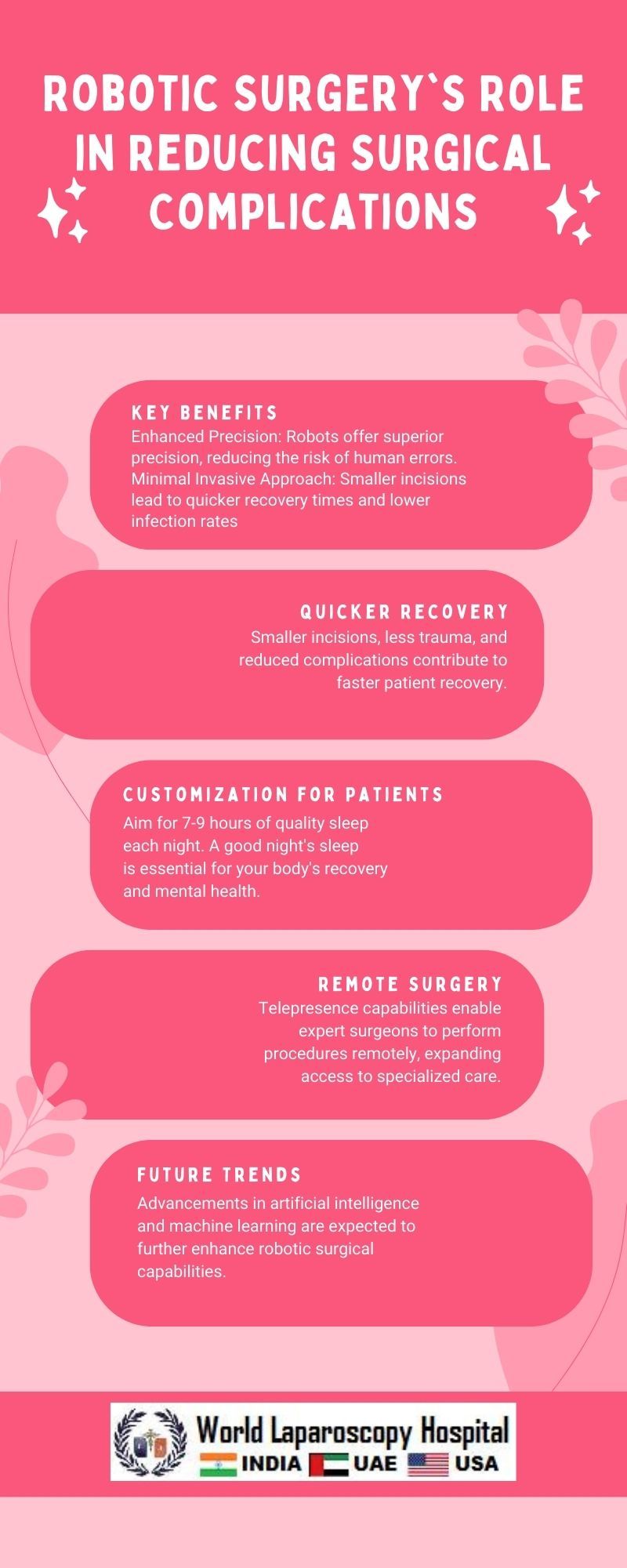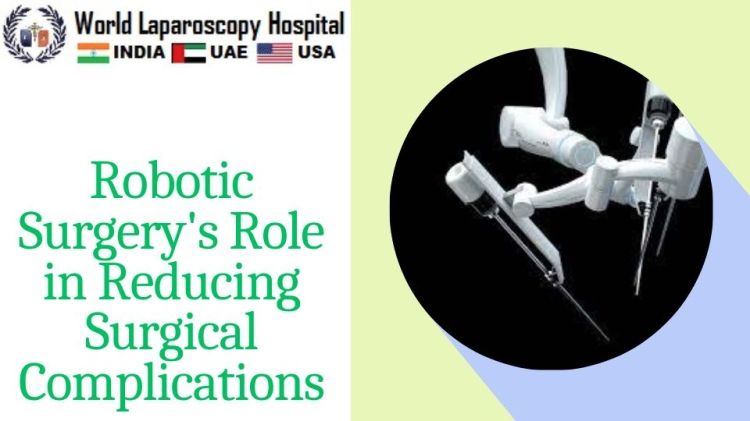Robotic Surgery's Role in Reducing Surgical Complications
Introduction:
In the ever-evolving landscape of modern medicine, technological advancements continue to redefine the way we approach healthcare. One such groundbreaking innovation is robotic surgery, a field that has witnessed tremendous growth in recent years. This article delves into the multifaceted role of robotic surgery and its unparalleled contribution to minimizing surgical complications, ultimately enhancing patient outcomes and safety.

The roots of robotic surgery trace back to the early 1980s, when the concept of using robotic systems for surgical procedures began to take shape. Over the decades, technological progress has propelled these systems from rudimentary prototypes to highly sophisticated, precision-driven platforms. Today, da Vinci Surgical System stands as a flagship example, enabling surgeons to perform minimally invasive procedures with unparalleled accuracy.
Mechanics of Robotic Surgery:Robotic surgery involves the use of robotic arms controlled by surgeons from a console. These arms hold specialized surgical instruments and a high-definition camera, providing a three-dimensional, magnified view of the surgical site. The surgeon maneuvers the robotic arms through the console, translating hand movements into precise actions by the robotic instruments.
Precision and Enhanced Dexterity:One of the key advantages of robotic surgery lies in its ability to offer unparalleled precision and enhanced dexterity. The robotic arms can execute intricate movements with a degree of accuracy that surpasses human capabilities. This precision is particularly crucial in delicate procedures, such as cardiac surgeries or neurosurgery, where even the slightest error can have profound consequences.
Improved Visualization:The three-dimensional, high-definition visualization provided by robotic systems offers surgeons an unprecedented view of the surgical field. This enhanced visualization allows for better identification of critical structures, increased accuracy in tissue dissection, and improved decision-making during surgery. As a result, surgeons can navigate complex anatomies with greater confidence, reducing the risk of inadvertent damage.
Minimally Invasive Approach:Robotic surgery is synonymous with a minimally invasive approach, a paradigm shift from traditional open surgeries. Smaller incisions, reduced tissue trauma, and minimal blood loss characterize these procedures. This not only leads to faster recovery times for patients but also lowers the risk of postoperative complications such as infections and excessive bleeding.
Reduced Blood Loss:The precision afforded by robotic surgery significantly minimizes blood loss during procedures. The ability to cauterize blood vessels with pinpoint accuracy and control bleeding in real-time contributes to a safer surgical environment. Patients undergoing robotic surgeries often experience less intraoperative blood loss, reducing the need for transfusions and associated complications.
Faster Recovery Times:The minimally invasive nature of robotic surgery translates into quicker recovery times for patients. Smaller incisions result in less pain, reduced scarring, and a faster return to normal activities. This aspect is particularly advantageous for elderly or frail patients who may struggle with the prolonged recovery associated with traditional open surgeries.
Lower Infection Rates:The risk of postoperative infections is inherently lower in robotic surgeries due to the reduced exposure of internal organs to external contaminants. Smaller incisions and a controlled surgical environment contribute to a diminished likelihood of infection, a critical factor in preventing complications that can compromise patient recovery.
Enhanced Ergonomics for Surgeons:Robotic surgery also prioritizes the well-being of the surgical team. The console from which surgeons operate the robotic system is designed with ergonomic considerations, reducing the physical strain associated with long hours of surgery. This ergonomic advantage not only enhances the comfort of the surgical team but also minimizes the risk of fatigue-related errors.
Applications Across Specialties:The versatility of robotic surgery is evident in its applications across various medical specialties. From urology and gynecology to gastroenterology and thoracic surgery, robotic systems have become indispensable tools for surgeons. The adaptability of these systems to diverse procedures underscores their transformative impact on the entire spectrum of surgical care.
Challenges and Future Directions:While robotic surgery has revolutionized the field of surgery, it is not without challenges. High costs associated with the acquisition and maintenance of robotic systems pose economic barriers for many healthcare institutions. Additionally, the learning curve for surgeons transitioning to robotic techniques requires time and training.
However, ongoing research and development aim to address these challenges. The evolution of artificial intelligence (AI) and machine learning holds promise for further enhancing the capabilities of robotic surgery. Predictive analytics, autonomous robotic movements, and integration with virtual reality are areas of active exploration that could shape the future landscape of robotic-assisted procedures.
Ethical Considerations and Patient Education:As with any technological advancement in medicine, there are ethical considerations surrounding robotic surgery. Transparency in communication between surgeons and patients is crucial. Patient education plays a pivotal role in fostering informed consent, ensuring that individuals are aware of the benefits, risks, and alternatives associated with robotic procedures.
Cost-Effectiveness and Accessibility:The cost-effectiveness of robotic surgery remains a topic of discussion within the healthcare community. While the initial investment may be substantial, proponents argue that the long-term benefits, including reduced hospital stays and lower complication rates, justify the expenses. Efforts are underway to make robotic surgery more accessible, with initiatives focused on cost reduction and increased affordability.
Global Impact and Accessibility:
Robotic surgery's impact extends beyond affluent healthcare systems. Initiatives to make this technology accessible in resource-limited settings are gaining traction. Collaborative efforts between governments, non-governmental organizations, and technology providers aim to bridge the gap, ensuring that the benefits of robotic surgery reach diverse populations worldwide.
Conclusion:In conclusion, robotic surgery stands as a transformative force in modern healthcare, redefining the standards of surgical precision and patient care. Its role in reducing surgical complications through enhanced precision, minimized invasiveness, and improved outcomes is a testament to the potential of technology in advancing medical practices. As we navigate the evolving landscape of healthcare, the continued integration and refinement of robotic surgery promise a future where patients can benefit from safer, more efficient, and accessible surgical interventions.


